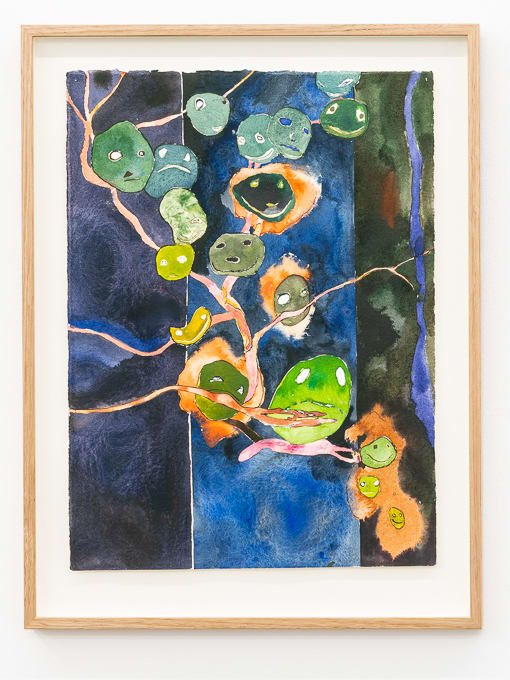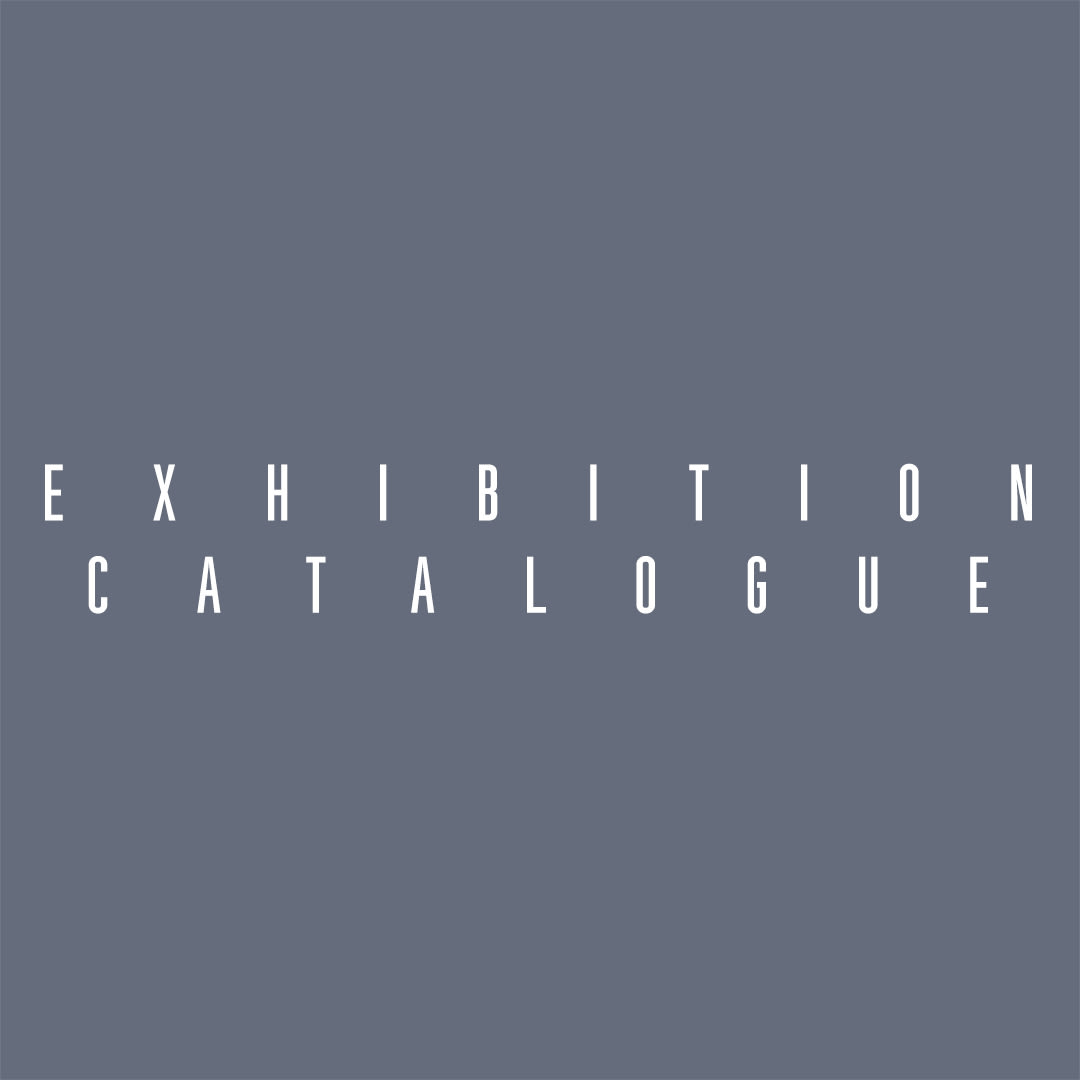ADAM LEE: MY THOUSAND SOUNDS
As through a long-abandoned half-standing house
only someone lost could find,
which, with its paneless windows and sagging crossbeams,
its hundred crevices in which a hundred creatures hoard and nest,
seems both ghost of the life that happened there
and living spirit of this wasted place,
wind seeks and sings every wound in the wood
that is open enough to receive it,
shatter me God into my thousand sounds
– Christian Wiman, “A Small Prayer in a Hard Wind”
BEERS London is thrilled to present My Thousand Sounds, the third solo exhibition at the gallery by esteemed Australian painter Adam Lee. The title, borrowed from Christian Wiman’s 2008 poem, “A Small Prayer in a Hard Wind”, suggests the notion of a divine presence amidst human fragility.
In his newest paintings, Lee continues his ongoing fascination with painting as a form of private pilgrimage. For Lee, the process of painting can be perceived as a metonym for a type of spiritual voyage. His intention is that the viewer might perceive these paintings as personal votive objects linking the familiar terrains of memory, family, and loss, with that of a uncanny yet unseen sense of corporeal transcendence. In many ways the works function as relic-like objects that house much greater sublime ideas.
As he has explored in previous bodies of work, Lee touches upon themes of lamentation and grief, ideas of refuge and shelter, and the interconnectedness of family. But these paintings also wander through new modes of expression for the artist, namely how imagination can be a means to expand upon, and into, physical embodiments of yet-to-be-realized worlds. In many respects, Lee has become an emboldened fantasist, and these imagined scenarios are both more illustrious and more fantastical; the viewer is confronted by painting as altarpiece, mirror, or threshold between worlds or realities.
The very title of the exhibition suggests this sort of phenomenological nature, housing a type of levity and effervescence. In place of concretion or fulfilment, these paintings offer magical suggestions, at times presented via the artist’s playful layering of translucent and opaque colour. Further, Lee employs an eclectic group of images and symbols in these new paintings – vestments, a chrysalis, a family tree extending like an ever-expanding vine, a sort of ‘will-o-the-wisp’ type rapture.
In Cave Painting, a hermit-like figure sits before a giant easel painting, surrounded by a graveyard of canvases scattered around the mouth of a cave, the inner walls of which appear like an artist’s palette or a map. And as viewers, we are reminded that this is a fantasy of Lee’s creation – at the wim of our omniscient narrator. Similarly, we are reminded of literary journeys or pilgrimages: Paul’s Auster’s character, Julian Barber, in his 1989 novel Moon Palace; the lost and seemingly forsaken painter stuck in his desert cave, who undergoes a liberation of all artistic restraints by making paintings no one will ever see. Or, perhaps, the mysterious painter’s studio in Haruki Murakami’s Killing Commendatore, a source of inspiration for Lee, wherein strange things happen: mysteries that hint at blurred or morphed realities. Lee aims to remind us that the artist’s pursuit is both solitary and manifold, both drudgingly isolated but also exalted and applauded with an almost religious-like reverie. It is a pursuit of opposites, of fulfilment and of reclusion.
In this sense Lee’s new paintings point toward an embodiment of the creative mind, both ever-expanding and consuming all at once. As with Auster and Murakami, these paintings seem to welcome the magic realism and the dreamlike sense of (mis)understanding that arises through the narrator’s (or in this case the painter’s) eyes.
Adam Lee works from his studio in the hills of the Macedon Ranges, Victoria, Australia, and he works mostly with traditional painting and drawing materials. His work references a wide range of sources including historical and colonial photography, biblical narratives, natural history, and most recently seem to embody more imagined or fantastical sources, investigating aspects of the human condition in relation to ideas of temporal and supernatural worlds. There is a sort of unsettling stillness to Lee’s work, a type of peaceful disquietude, where figures are situated in strange, unearthly spaces seem to tend to their own spiritual procession. As his practice has moved from more traditional ‘landscape’ painting to a practice that incorporates more emotive, poetic and narrative qualities, the work seems laboured upon with an almost religious reverence – somewhere between RB Kitaj and Rothko, oddly enough. There is a stylization of all Lee’s forms – where the figures become almost crystallized – and the viewer senses the creative and critical processes Lee undergoes to create his distinct bodies of work. From hunters, to shamanism, to fatherhood, Lee’s themes result in an informative nucleus from which he works prolifically to create large paintings and drawings that respond to a central theme. As viewers, we become complicit to the world he creates.
ADAM LEE (b. 1979, Melbourne, Australia) lives and works in Macedon Ranges, Victoria, Australia. He obtained a PhD from Royal Melbourne Institute of Technology in 2015, and graduated with a Masters by Research and Bachelor of Fine Art from the same university in 2006 and 2002 respectively. Solo exhibitions include: My Thousand Sounds, BEERS London, London, (2019); Stratum with Jon Cattapan, Station, Melbourne (2019), Monolith, Gertrude Glasshouse, Melbourne (2018), Lament Asunder (All is Dark is Midnight to Me), Station, Melbourne (2017); Of a Great and Might Shadow, Angell Gallery, Toronto (2016);. Eden. Exile. Babel, Station, Melbourne (2015), Into the Heart of the Sea and to the Roots of the Mountains, Kalimanrawlins, Melbourne (2012), The World Travailing, Kalimrawlins, Melbourne (2011), And They Built for Themselves Kingdoms, Tristian Koenig, Melbourne (2011). Group exhibitions include: Shanti Shanti Shanti, Station, Melbourne (2018), Sirens (I Heard Voices In The Night), Gertrude Glasshouse, Melbourne (2016), 35 Works on Paper, BEERS, London, UK (2016), Angell Gallery’s 20 Year Anniversary, Angell Gallery, Toronto, (2016), I Heart Painting 2, Angell Gallery, Toronto (2015); In the Dust of This Planet, Station, Melbourne (2014); Ready Player One, Station, Melbourne (2013), and Art Stage Singapore (with Karen Black), Tristan Koenig Gallery, Singapore (2012). Lee has been shortlisted for numerous awards including the Geelong Contemporary Art Prize 2014, The Arthur Guy Memorial Painting Prize 2014, the Sulman Prize, the RBS Emerging Artist Award, the Rick Amor Drawing Prize, the Mornington Peninsular Drawing Prize, the Redlands Westpac Art Prize and The Churchie National Emerging Artist Award. In 2017 he was the inaugural recipient of the Glasshouse Stonehouse Residency in France. The first monograph of his work, Votive, was published through Perimeter Books in 2018. Lee’s first group showing with BEERS London was in The Fantasy of Representation, London (2015). His solo exhibitions at BEERS London include A Long Obedience, London (2015), and This Earthen Tent, London (2017).


























